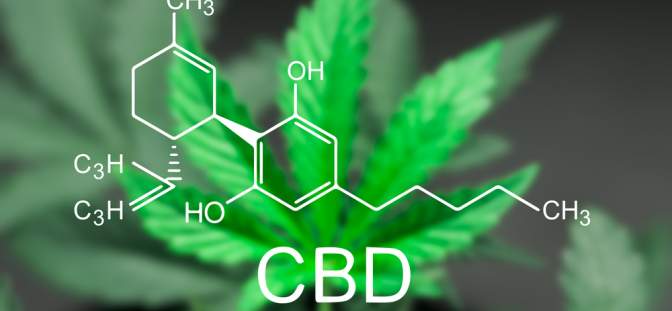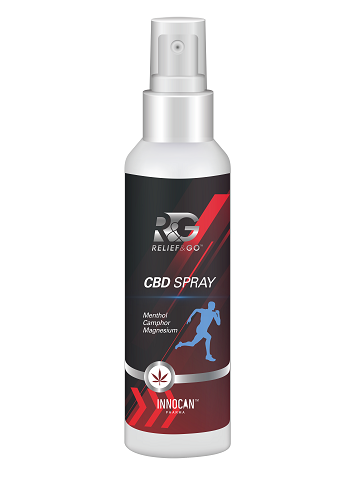What Is Chronic Fatigue Syndrome & How Does CBD Oil Help?

Chronic fatigue syndrome or CFS, also called myalgic encephalomyelitis (ME), is a long-term illness that impacts multiple body systems. People diagnosed with ME/CFS find it difficult to carry out usual activities, and in some people, the condition can cause them to become bed-bound or housebound.
The main symptom after which the syndrome gets its name is chronic fatigue that is not relieved with rest or sleep and is exacerbated with activity. People diagnosed with ME/CFS also suffer from sleep-related problems in terms of quality and duration of sleep. ME/CFS symptoms tend to worsen when people attempt to carry out as many tasks as needed, which is termed as post-exertional malaise or PEM.
Other symptoms associated with ME/CFS are dizziness, lightheadedness, problems with concentration, thinking, and pain.
The spotlight is on CBD oil as an effective, non-toxic therapy to address distressing symptoms of fatigue, chronic pain, and sleep disturbances associated with ME/CFS.
What causes chronic fatigue syndrome?
ME/CFS is a chronic, acquired, multi-systemic condition marked by significant relapse post any kind of cognitive, emotional, or physical exertion. The condition is linked to cognitive, immune, and neurological impairment, autonomic dysfunction, and sleep abnormalities that cause pathological fatigue and consequent functional impairment. The cause of ME/CFS is not known, although symptoms in many people are triggered by another illness, infection, or health condition.
While the underlying etiology of ME/CFS is unclear, laboratory tests or diagnostics are also not available to diagnose the condition. No drugs have been developed specifically to treat ME/CFS, and as of now, there is no known cure. In the absence of readily available diagnostics or tests, assigning an ME/CFS diagnosis can take years in clinical settings. According to one estimate, diagnosis is not received by about 84 to 91% of patients suffering from ME/CFS.
Children, adolescents, and adults can be affected by myalgic encephalomyelitis (ME)/chronic fatigue syndrome (CFS). The gender ratios in the community for ME/CFS are 3 to 4:1 female to male, suggesting that more women than men are affected by this syndrome.
Many experience symptoms of the syndrome for years before they receive a diagnosis. ME/CFS is associated with overwhelming fatigue, along with a substantial reduction in mental and physical stamina.
A general feeling of illness (malaise) is a key characteristic of the syndrome, while a patient with CFS experiences worsening of symptoms after even low levels of mental or physical exertion. These symptoms that appear post-exertion tend to persist for days, weeks, or hours while not being relieved by sleep or rest.
Other symptoms of chronic fatigue syndrome:
- Cognitive problems
- Disturbed sleep or unrefreshing sleep
- Localized or generalized pain
- Lightheadedness
- Multiple organ systems related symptoms
According to NHS (National Health Service) of the U.K., some people may have additional symptoms, such as:
- Joint pain or muscle pain
- Sore throat
- Sore glands that are not swollen
- Problems remembering
- Headaches
- General malaise
- Heart palpitations (irregular or fast heartbeats)
- Flu-like symptoms
Some of the younger patients with CFS can attend school either on a part-time or full-time basis, while many others can be housebound, wheelchair dependent, or bedbound. As there are no specific diagnostic tests for ME/CFS, doctors make the diagnosis based on a clinical correlation of symptoms. They evaluate the patient’s medical history and exclude other causes of fatigue through imaging and testing to arrive at an ME/CFS diagnosis.
Chronic fatigue syndrome either appears suddenly or gradually with an abrupt rise in frequency and intensity of milder fatigue symptoms. There is also often a history of recurrent illnesses that precede the appearance of CFS symptoms months or even years before the onset of CFS. A common occurrence is a viral or flu-like illness, while there are also orthostatic symptoms such as lightheadedness. At times, CFS can follow acute infections such as infectious mononucleosis.
While symptoms of CFS are generally experienced by all patients who are diagnosed with it, the severity of these symptoms tends to vary widely. Many suffer from substantially reduced cognitive and physical functioning, and there is an impaired quality of life, which is lower as compared to other illnesses, including epilepsy, diabetes, cystic fibrosis, or epilepsy.
While there is no cure or specific treatment for ME/CFS, symptomatic management involves the following therapies:
- Cognitive Behavioural Therapy or CBT
- Graded Exercise Therapy or GET, which is a structured exercise program
- Medications to control sleeping problems, joint or muscle pain, and nausea
CBD’s potential therapeutic benefits in treating chronic fatigue syndrome
The therapeutic potential of CBD is being explored for many conditions ranging from epilepsy, stroke, Alzheimer’s to fracture healing and skin conditions. The U.S. Food and Drug Administration (FDA) approved CBD oil on June 25, 2018, to treat two forms of severe epilepsy in children known as Dravet syndrome and Lennox-Gaustaut. Many conditions that are being evaluated in connection to CBD share some signs and symptoms of chronic fatigue syndrome.
More about CBD
CBD is an abbreviation for cannabidiol, which is one of the many chemical compounds found exclusively in the Cannabis Sativa plant. Belonging to the Cannabeacea family of plants, which are flowering plants, Cannabis Sativa was classified first in 1753. The herbaceous annual flowering plant is cultivated widely across the world, although indigenous to certain parts of Asia. Throughout history, Cannabis Sativa has been used to produce seed oil, industrial fiber, food, medicine, spiritual/religious purposes, and for recreation. All parts of the Cannabis plant are harvested using different methods based on the intended use.
There are hybrid and pure varieties of Cannabis plant genus, with the three common species being Cannabis Sativa, Cannabis Indica, and Cannabis Ruderalis.
These varieties are cultivated to intensify certain characteristics within the plant or to differentiate the strain to enhance its medicinal effects. While some varieties of Cannabis are grown exclusively for the seed and fiber (hemp), other cultivars have a high amount of a psychoactive compound called THC or tetrahydrocannabinol (marijuana). A third commonly grown variety of Cannabis is rich in other cannabinoids but low in THC (less than 0.3%).
The Cannabis plant contains 500 or more compounds, with about a hundred of them being classified as cannabinoids. While some cannabinoids are present in minor amounts, about 66 cannabinoids are present in significant amounts. While THC is also a cannabinoid, the difference between this compound and other cannabinoids is that while the former produces psychoactive effects (a feeling of ‘high’), the latter does not. Some Cannabis plant varieties produce high concentrations of a cannabinoid known as CBD or cannabidiol. While CBD is non-psychoactive, research shows that it blocks the psychoactive effect of THC in the brain.
CBD is extracted from the Cannabis plant using advanced extraction techniques, such as Supercritical Fluid Extraction (CO2 extraction), hydrocarbon extraction, steam distillation, or traditional solvent extraction.
CBD thus extracted is mixed with carrier oils that are known for their therapeutic properties, such as almond oil, avocado oil, olive oil, or coconut oil, apart from other important ingredients to make topical medicinal products. From facial cream, pain relief spray, anti-aging eye serum to body oils, a wide range of CBD-integrated topical products are available that typically contain between 100 and 300 milligrams of cannabidiol.
Reducing abnormal pain sensation
The central nervous system (CNS), according to many studies, plays a major role in causing abnormalities in pain processing, which is common in chronic fatigue syndrome or fibromyalgia. The abnormalities are related to inadequate pain inhibition and central sensitization. Central sensitization refers to a condition in the nervous system where there is persistent high reactivity, leading to maintenance of a constant state of pain.
A growing body of evidence indicates glial cells play a key role in the production of abnormal pain sensitivity. According to a 2017 research featured in Expert Opinion on Therapeutic Targets, CBD has the potential to reduce certain brain cells’ (known as glia) activity that causes central sensitization. The hypersensitivity of the CNS is also linked to other conditions such as migraine and irritable bowel syndrome.
Although not documented in chronic fatigue syndrome, endocannabinoid deficiency has been attributed as a cause of chronic fatigue and fibromyalgia. Endocannabinoid deficiency refers to low levels of endocannabinoids or enhanced destruction of the naturally occurring endocannabinoids in the body. Researchers hypothesize that CBD prevents the destruction of endocannabinoids while indirectly activating cannabinoid receptors that restore stability and homeostasis. This restored balance leads to relief from pain and improved energy and alertness.
A review featured in Cannabis and Cannabinoid Research states that CBD can be effective for treating conditions such as irritable bowel syndrome, migraine, and fibromyalgia that share some common symptoms.
Pain relief
CBD oil has been evaluated extensively for its pain-relieving qualities. Many studies support the potential of CBD oil in mitigating inflammation and pain. Systematic reviews that covered multiple studies concerning the efficacy of CBD for pain concluded that CBD could bring about a significant reduction in chronic pain. Researchers found in a study featured in the Journal of Experimental Medicine that CBD oil was effective in reducing inflammation and pain, making them suitable therapeutic agents in the treatment of chronic pain that accompanies CFS.
Opioids or NSAIDs (non-steroidal anti-inflammatory drugs) are prescribed traditionally for pain management in patients suffering from ME/CFS. However, while strong painkillers have undesirable side effects, there have been drug overdoses, while doctors are concerned about the risk of addiction. Medical cannabis has been found to be a non-toxic, safer alternative for pain management as it is devoid of psychoactive substances while being rich in anti-inflammatory compounds. CBD administered topically as pain relief spray, pain relief roll-on, body oil, or serum has optimal bioavailability as it bypasses the metabolic pathways of the oral route. While there is no risk of addiction, CBD has been shown to cause no side effects in studies. In a study, medical cannabis was administered to more than two thousand patients suffering from chronic pain. Researchers found that CBD provided relief from pain for a majority of participants without any unpleasant side effects.
CBD pain relief spray was also found to be effective in minimizing inflammation and pain in an animal model study that featured in the European Journal of Pain.
Combating oxidative stress
Researchers also found that CBD reduces oxidative stress and mitochondrial dysfunction associated with Alzheimer’s disease through in-vivo studies.
How CBD reduces fatigue
Cannabis derivatives, including CBD oil, have been used in many parts of the world for many decades to treat several conditions such as fatigue, pain, and epilepsy. Available evidence points to the fact that CBD exerts such beneficial action by influencing key signals in brain cells. By interacting with certain brain receptors, CBD helps reduce pain sensation while improving mood and energy levels.
Researchers discovered the cannabinoid receptors in the brain and the peripheral immune system in the 1980s. Soon after, scientists also discovered the endocannabinoid system or ECS that regulates the homeostatic balance in the human body. While there are many naturally occurring endocannabinoids, the body produces them in response to internal stress. Anandamides (arachindonylethanolamide ) and 2-arachidonoyl glycerol (2-AG) are the two key endocannabinoids. The cannabinoid receptors (CB1 and CB2) are distributed widely across the human body, and along with the endocannabinoids, comprise the endocannabinoid system.
CB1 and CB2 receptors are associated with energy and mood. While CBD, unlike the other psychogenic compound THC, does not influence these receptors directly, it may modify the way receptors bind to other essential chemicals such as neurotransmitters. These neurotransmitters are important messengers that relay key signals to the brain. CBD may also prevent endocannabinoids from being destroyed, thereby promoting the balance of physiological functions.
Many researchers propose that non-CB1 mechanisms of CBD are involved in pain regulation. CBD is thought to activate receptors of serotonin 1A, vanilloid, and adenosine A2A that help control pain and inflammation.
CBD-integrated pain relief spray has been studied for its potential in managing chronic pain associated with neurological conditions such as multiple sclerosis.
More articles:









